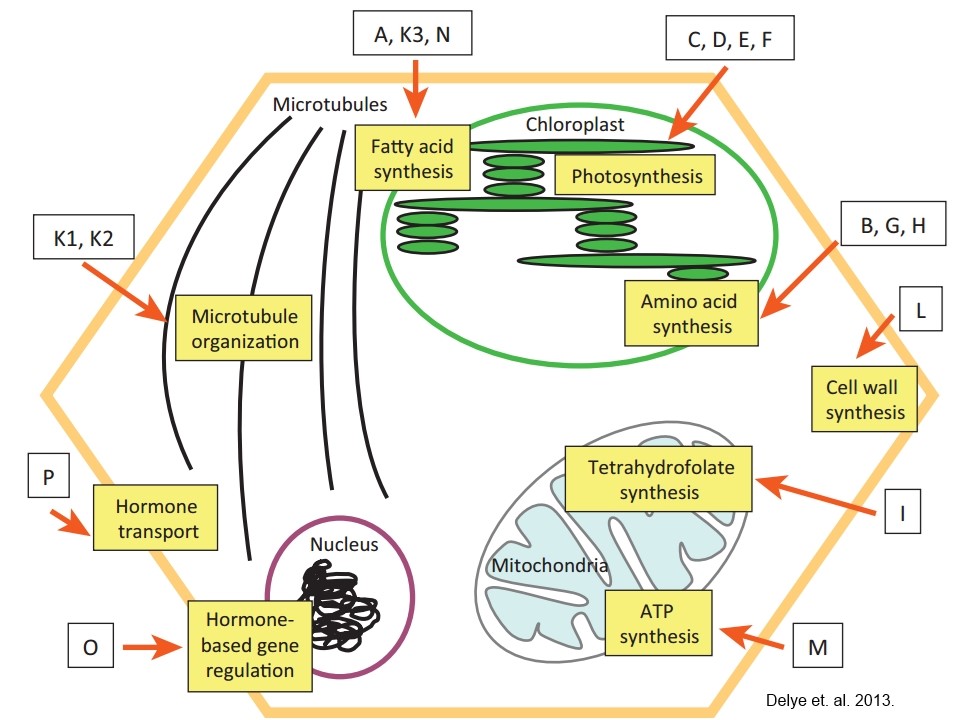Chapter 18: MOA Part 4 – Photosynthesis Inhibitors (PPO & Pigment Inhibitors)
18.2 Overview of Herbicides and Photobiology
Recall in earlier chapters how the Lipid Synthesis Inhibitors and the Amino Acid Synthesis Inhibitors interfered with an enzyme that was crucial for plant growth and developments. Then in the case of the Growth Regulators, the herbicide caused uncontrolled growth of the plants.
The Photosynthesis Inhibiting herbicides which will be discussed in this chapter and the next chapter function quite differently. Photosynthesis Inhibitors interfere directly with the plant’s process of photosynthesizing and harnessing sunlight. Biochemists describe plants like little nuclear reactors. As such, they need water to cool off because heat is generated during photosynthesis. With this class of herbicides, the mechanisms that allow the plant to safely release that heat are stopped. In the most basic sense, these herbicides cause a plant to explode at a cellular level.
There are three Mode of Actions and nine Sites of Action that negatively affect plants in this manner:
- Photosynthesis Inhibitors
- o Group 5. Photosystem II Inhibitors – Binding Site Different from 6 or 7 (HRAC Group C1)
- o Group 6. Photosystem II Inhibitors – Binding Site Different from 5 or 7 (HRAC Group C3)
- o Group 7. Photosystem II Inhibitors – Binding Site Different from 5 or 6 (HRAC Group C2)
- Pigment Inhibitors
- o Group 11. Inhibition of carotenoid biosynthesis (unknown target) (HRAC Group F3)
- o Group 12. Inhibition of carotenoid biosynthesis at the phytoene desaturase step (PDS) (HRAC Group F1)
- o Group 13. DOXP Synthase Inhibitors (HRAC Group F4)
- o Group 27. 4-HPPD Inhibitors (4-HPPD) (HRAC Group F2)
- Cell Membrane Disruptors
- o Group 14. PPO Inhibitors (PPO) (HRAC Group E)
- o Group 22. Photosystem I Electron Diverter (PS1) (HRAC Group D)
This chapter will focus on the Pigment Inhibitors and the Cell Membrane Disrupters. The next chapter will focus on the Photosynthesis Inhibitors, including both Photosystem I (Group 22) and Photosystem II (Groups 5, 6, and 7).

Review and Reflection